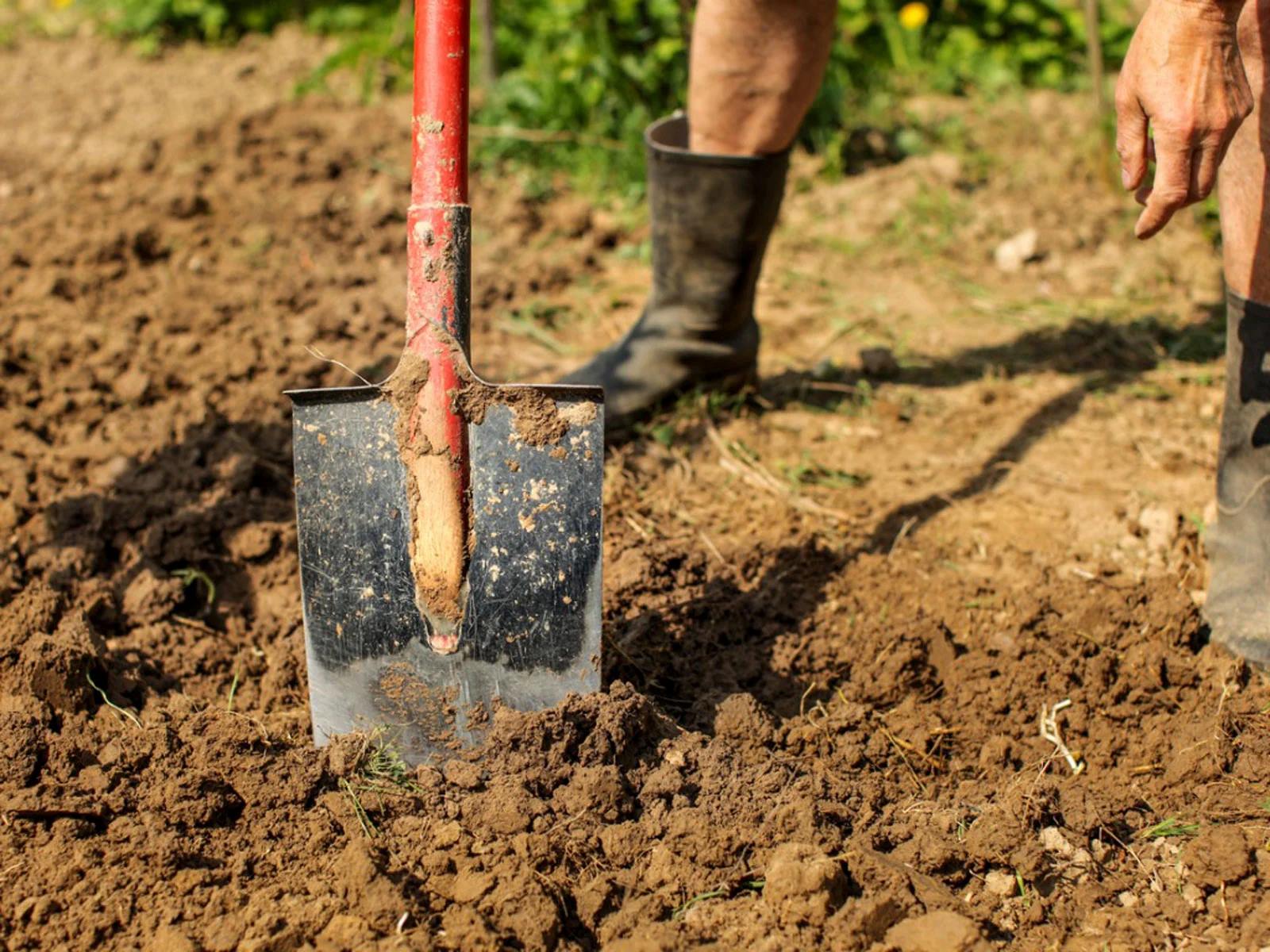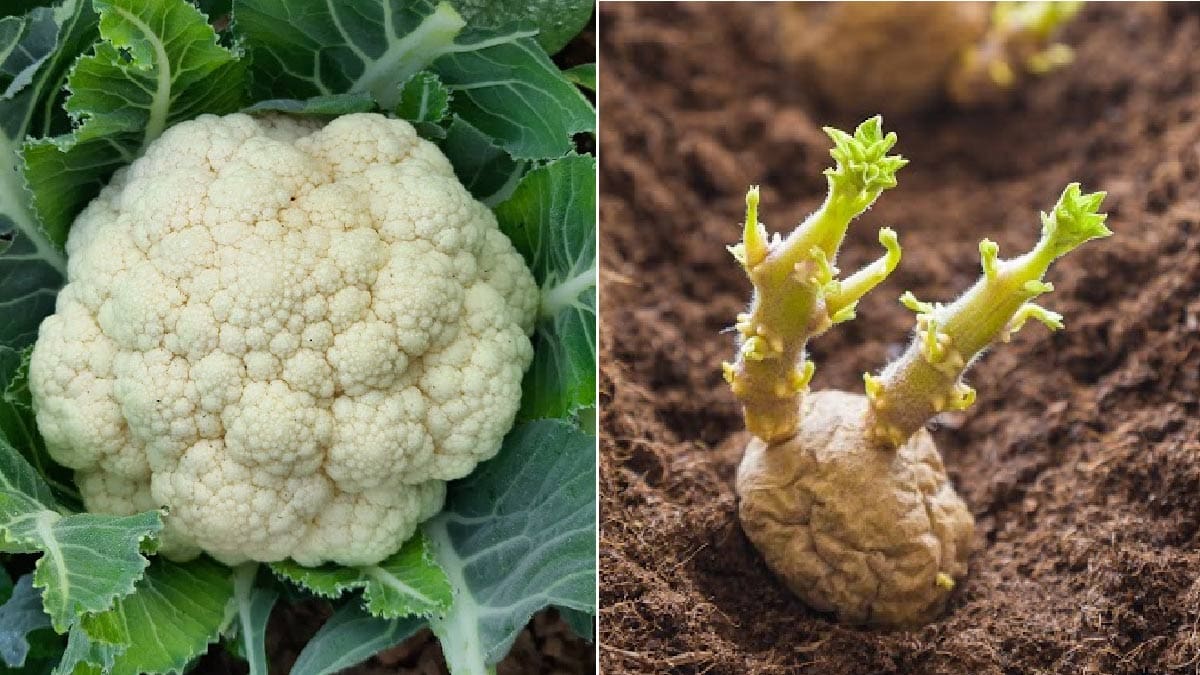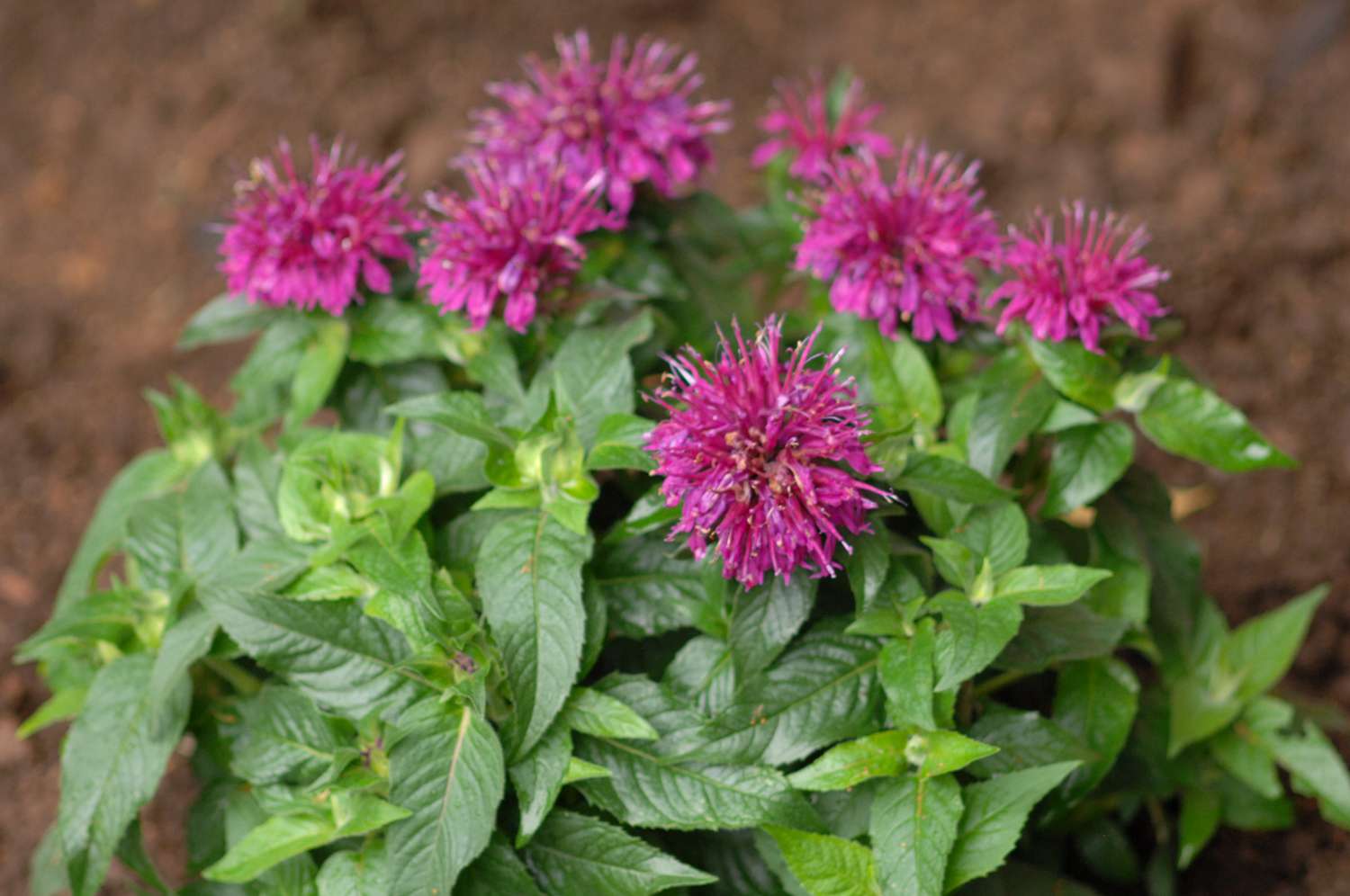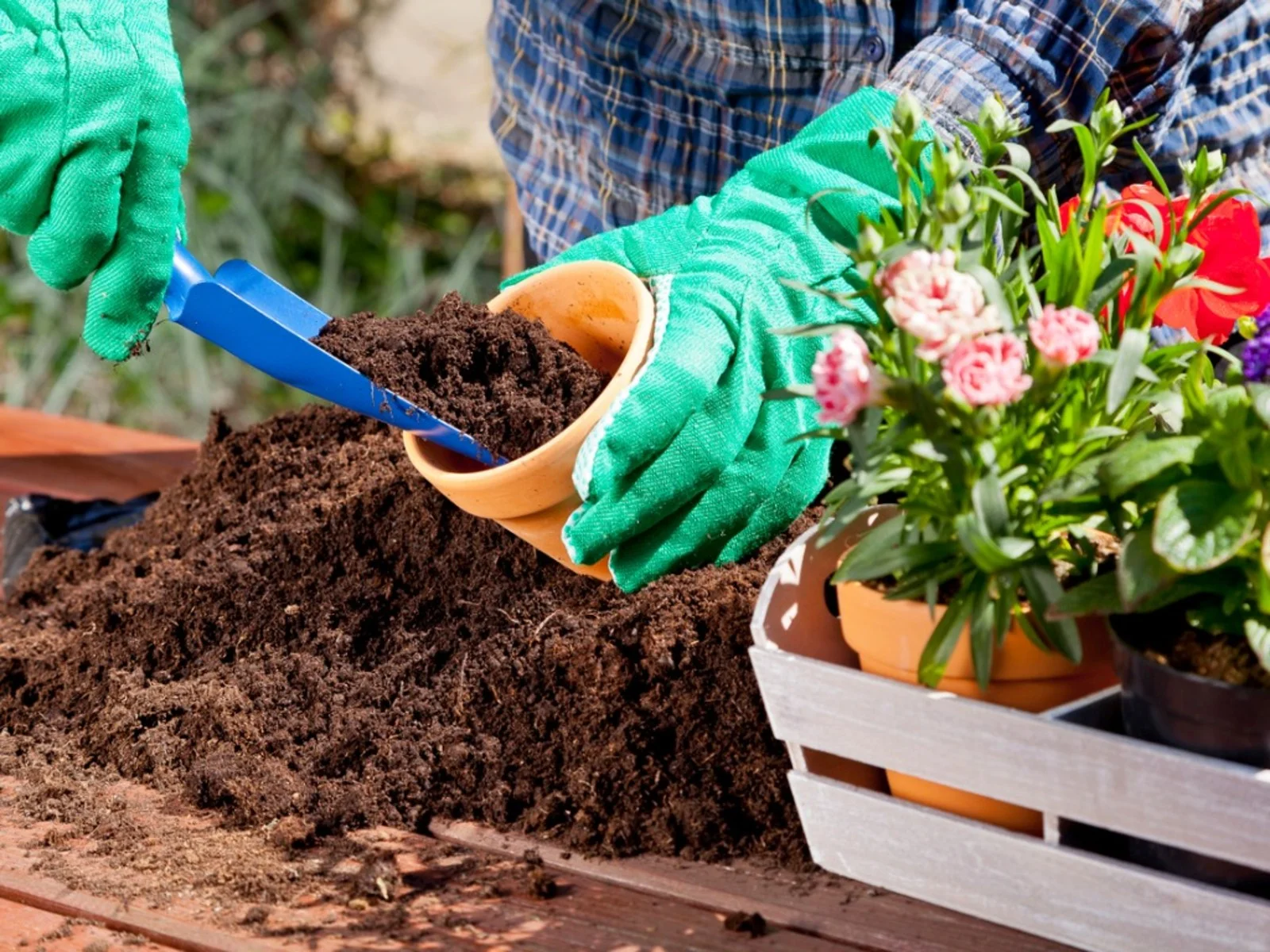Home>Gardening Basics>Understanding Soil>How To Condition Clay Soil For Planting


Understanding Soil
How To Condition Clay Soil For Planting
Modified: February 8, 2024
Learn the best techniques for conditioning clay soil for planting with this comprehensive guide. Understanding soil composition is key to improving your gardening success.
(Many of the links in this article redirect to a specific reviewed product. Your purchase of these products through affiliate links helps to generate commission for Chicagolandgardening.com, at no extra cost. Learn more)
Table of Contents
Introduction
When it comes to gardening or landscaping, soil plays a crucial role in the success of your plants. However, not all soil is created equal. If you happen to have clay soil in your garden, you may face certain challenges when it comes to planting and growing healthy plants. Clay soil is known for its heavy texture and poor drainage, making it difficult for plant roots to access the oxygen, water, and nutrients they need for healthy growth.
But fear not! With a little know-how and some conscious efforts, you can condition your clay soil to create a more favorable environment for your plants. This article will guide you through the steps to improve your clay soil and make it plant-friendly.
Before we delve into the process of conditioning clay soil, it’s important to understand why clay soil poses challenges for planting. Clay soil is composed of fine particles that tend to clump together, creating a dense, compacted soil structure.
The density of clay soil makes it challenging for water to penetrate, resulting in slow drainage and waterlogging. The compacted nature of clay soil also limits the movement of air, which can suffocate plant roots and inhibit their growth.
Why is Clay Soil a Challenge for Planting?
Clay soil presents several challenges when it comes to gardening and planting. Understanding these challenges will help you better address and overcome them. Here are the primary reasons why clay soil can be a challenge:
- Poor Drainage: Clay soil has fine particles that tightly compact together, creating a dense structure that hinders water drainage. When it rains or when you water your plants, the water is unable to infiltrate the soil easily, leading to waterlogged conditions. This excess moisture around the roots can cause root rot and other fungal diseases, eventually leading to the decline or death of your plants.
- Compacted Soil: Clay soil is naturally more compacted than other soil types. This compaction can restrict the movement of air and make it harder for plant roots to penetrate and spread out. Poor root development can have a negative impact on plant growth, limiting nutrient uptake and overall plant health.
- Slow Warm-up in Spring: Clay soil tends to retain water and stay colder for longer periods, delaying the warming-up process in the spring. This delay can affect the germination and growth of certain plants that require warmer soil temperatures to thrive.
- Poor Nutrient Availability: While clay soil can retain nutrients relatively well, it often suffers from nutrient imbalances. The dense nature of clay soil can make it difficult for plant roots to access essential nutrients. As a result, plants may show signs of nutrient deficiencies even if the nutrients are technically present in the soil.
- Difficulty in Tilling: Due to its compacted nature, clay soil can be challenging to till or dig. It can become heavy and sticky when wet, making it hard to work with and prepare for planting.
Understanding these challenges will help you develop the necessary strategies and techniques to overcome them and successfully cultivate your plants in clay soil. Through proper soil conditioning and management, you can create a healthier and more productive growing environment for your plants.
Assessing the Soil Conditions
Before you dive into conditioning your clay soil, it’s important to assess its current state. By understanding the specific characteristics and conditions of your soil, you can tailor your soil conditioning efforts more effectively. Here are some key aspects to consider when assessing your clay soil:
- Texture and Composition: Clay soil is characterized by its fine particles that give it a smooth and sticky feel when wet. Take a handful of soil and examine its texture. If it forms a compacted ball that holds its shape, chances are it is predominantly clay soil.
- Drainage: Test the soil’s drainage by saturating a small area with water and monitoring how long it takes for the water to drain away. If it takes several hours or even days for the water to seep through, your soil likely has poor drainage, a common characteristic of clay soil.
- Soil pH: Determine the pH level of your clay soil using a soil testing kit or by sending a sample to a professional soil testing lab. Clay soil tends to be more alkaline or neutral, but there can be variations depending on your specific location.
- Compaction: Assess the level of soil compaction by gently pressing a garden tool, such as a shovel, into the soil. If the soil is resistant and compacted, it may hinder root penetration and water movement.
- Nutrient Levels: Conduct a soil test to identify the nutrient levels in your clay soil. This will help you determine any deficiencies or imbalances that need to be addressed during the conditioning process.
By thoroughly assessing the soil conditions, you will have a better understanding of the specific challenges you need to address. This knowledge will guide your decisions in choosing the most appropriate methods and amendments to condition your clay soil effectively.
Steps for Conditioning Clay Soil
Conditioning clay soil requires a systematic approach to improve its structure and promote a healthy growing environment for your plants. Follow these steps to properly condition your clay soil:
- Amending the Soil with Organic Matter: One of the most effective ways to improve clay soil is by adding organic matter. Incorporate generous amounts of compost, well-rotted manure, or leaf mold into the soil. Organic matter helps break up the compacted clay particles, improving drainage, enhancing soil structure, and increasing nutrient availability.
- Improving Drainage: To address the poor drainage commonly associated with clay soil, you can take several measures. Consider creating raised beds or planting in mounds to improve the soil’s drainage. Additionally, you can install drainage systems or pathways to redirect excess water away from the planting area.
- Avoiding Compaction: Prevent further compaction of clay soil by avoiding activities that contribute to soil compaction, such as walking or working on wet soil. Use raised beds or designated pathways to provide access to your plants without treading on the cultivated areas.
- Adjusting Soil pH: Test the pH of your clay soil and make adjustments if necessary. Most plants prefer slightly acidic to neutral soil. If your clay soil is too alkaline, you can lower the pH by adding substances like elemental sulfur or acidic organic materials such as pine needles.
- Mulching: Apply a layer of organic mulch, such as straw, wood chips, or leaf litter, around your plants. Mulching helps regulate soil temperature, reduce water evaporation, and prevent soil erosion. Additionally, it adds organic matter to the soil as it breaks down over time.
Remember that conditioning clay soil requires time and patience. It may take several seasons of consistent efforts to significantly improve its structure and fertility. Regularly monitor the soil conditions and make adjustments as needed to ensure the ongoing health and productivity of your plants.
Amending the Soil with Organic Matter
Amending clay soil with organic matter is a crucial step in improving its quality and fertility. Organic matter helps break up the compacted clay particles, allowing for better drainage and root penetration. Here’s how to effectively amend clay soil with organic matter:
- Add Compost: Compost is a valuable source of organic matter that improves soil structure and nutrient content. Spread a layer of compost, about 2-3 inches thick, over the entire area of clay soil. Use a garden fork or a tiller to work the compost into the top few inches of the soil. This will help incorporate the organic matter and improve its distribution.
- Apply Well-Rotted Manure: Well-rotted manure is another excellent organic amendment for clay soil. It adds nutrients and helps break up the heavy clay particles. Spread a layer of well-rotted manure over the soil surface and incorporate it into the top few inches using a garden fork or tiller.
- Use Leaf Mold: Leaf mold, which is partially decomposed leaves, is rich in organic matter and beneficial microbes. Collect fallen leaves and create a compost pile specifically for leaf mold. Once the leaves have broken down into a crumbly texture, spread it over the clay soil and work it in.
- Consider Green Manure Cover Crops: Green manure cover crops, such as clover or winter rye, can be grown and tilled into the clay soil. These cover crops add organic matter and improve soil structure as they decompose. Cut them down and incorporate them into the soil before they go to seed.
It’s important to replenish the organic matter in clay soil regularly. Apply compost or other organic amendments each season, especially before planting new crops or flowers. Over time, the organic matter will continue to break down, improving the soil structure, moisture retention, and nutrient availability.
Remember to choose organic amendments that are well-aged and free from chemical additives. These will provide the most benefits to your soil and plants without introducing harmful substances. By amending clay soil with organic matter, you will create a more hospitable environment for your plants, encouraging healthy growth and improving overall garden productivity.
Improving Drainage
Poor drainage is a common issue in clay soil due to its compacted nature. Improving drainage is essential to prevent waterlogging and create a healthier environment for your plants. Here are some ways to enhance drainage in clay soil:
- Create Raised Beds: Raised beds are a great option for improving drainage in clay soil. Build raised beds by mounding the soil or constructing raised garden beds using materials such as wood or stone. The elevated position helps water drain away more efficiently, preventing water from pooling around plant roots.
- Install Drainage Systems: If your clay soil is consistently waterlogged, installing drainage systems can help improve its drainage capacity. French drains, for example, consist of perforated pipes surrounded by gravel, allowing water to flow away from the planting area. Consult a professional to determine the best drainage solution for your specific situation.
- Amend with Coarse Sand or Grit: Incorporating coarse sand or grit into clay soil can help improve its drainage. The sand or grit particles create spaces between the clay particles, allowing water to move through more freely. Aim to add about one part sand or grit to every four parts of clay soil, and thoroughly mix it in.
- Provide Drainage Pathways: To redirect excess water away from your garden, create pathways or ditches. These pathways can be dug and filled with gravel or small stones to create a channel for water to flow away from the planting area.
Remember that draining clay soil completely may not be feasible, and that’s okay. The goal is to improve the drainage to a level that supports healthy plant growth. Monitoring soil moisture levels and adjusting watering practices accordingly can also help in maintaining optimal soil moisture levels.
By employing these drainage improvement strategies, you can prevent waterlogged conditions and create an environment where plant roots can access the necessary oxygen, nutrients, and water they need for healthy growth.
Avoiding Compaction
Compacted clay soil can be a major obstacle to healthy plant growth as it restricts root penetration, impedes water movement, and inhibits essential air exchange. To prevent further compaction and preserve the soil structure, it is crucial to adopt specific practices. Here are some strategies for avoiding compaction in clay soil:
- Minimize Foot Traffic: Limit walking or working on the clay soil when it is wet. The moisture in the soil softens it, making it more susceptible to compaction. Designate clear pathways and work in sections, using boards or stepping stones to distribute weight and prevent direct contact between the soil and your feet or equipment.
- Divide Garden Beds: Create separate garden beds or planting areas to avoid compacting the clay soil uniformly. By working with smaller, manageable sections, you can minimize the chances of compaction and concentrate your efforts on improving specific areas.
- Mulch: Apply a layer of organic mulch, such as straw or wood chips, to the surface of the soil. Mulch acts as a protective barrier, preventing raindrops from directly hitting the soil and causing compaction. It also helps regulate soil temperature, retain moisture, and suppress weed growth.
- Use Raised Beds: Raised beds can help alleviate compaction issues by providing loose, well-drained soil for plant roots. By gardening in raised beds, you can avoid the need to step directly onto the clay soil, reducing the risk of compacting it.
- Practice No-Till Gardening: Tillage can disrupt soil structure and contribute to compaction. Consider adopting no-till or minimal tillage practices in your garden. Instead of traditional tilling, use techniques such as sheet mulching or lasagna gardening to build healthy soil layers without disturbing the existing clay soil.
By implementing these practices, you can minimize the compaction of clay soil and maintain a loose and airy structure that promotes healthy root development and efficient nutrient uptake. Consistency and awareness are key in avoiding compaction, so be mindful of your gardening activities and strive to protect the integrity of the clay soil.
Adjusting Soil pH
The pH level of your clay soil plays a crucial role in determining plant nutrient availability. Most plants thrive in slightly acidic to neutral soil, which facilitates nutrient uptake. Adjusting the soil pH in clay soil can greatly benefit plant growth. Here’s how to adjust the soil pH in clay soil:
- Test the Soil pH: Use a soil testing kit or send a soil sample to a professional lab to determine the current pH of your clay soil. This will provide a baseline for determining how much adjustment is needed.
- Adding Organic Matter: Incorporating organic matter, such as compost or well-rotted manure, can help balance the pH of clay soil. These organic amendments gradually release acidic compounds, helping to lower the pH and make the soil more favorable for many plants.
- Using Elemental Sulfur: Elemental sulfur is commonly used to lower soil pH. Follow the recommended application rate on the packaging based on your soil test results. Mix the sulfur thoroughly into the top few inches of the soil, as it takes time for the sulfur to react and alter the pH.
- Adding Acidic Materials: Acidic materials like pine needles, peat moss, or coffee grounds can be mixed into the soil to lower pH. However, bear in mind that these materials may not have a significant and immediate impact on the overall soil pH. Instead, they provide a more gradual shift towards acidity over time.
- Applying Lime: If your clay soil is too acidic, you can raise the pH by applying agricultural lime, also known as garden lime. However, it’s important to note that adjusting soil pH with lime can be a slow process, and it’s best to follow the recommendations based on your soil test results.
Periodically test the soil pH to monitor the effectiveness of your pH adjustment efforts. Keep in mind that adjusting soil pH takes time, so be patient and allow the amendments to work gradually. Maintaining the appropriate pH range in your clay soil will enhance nutrient availability and optimize the growing conditions for your plants.
Mulching
Mulching is a valuable practice that provides numerous benefits to clay soil. Applying a layer of organic mulch to the soil surface offers a protective barrier that improves moisture retention, regulates soil temperature, suppresses weed growth, and enhances overall soil health. Here’s how mulching can benefit your clay soil:
- Moisture Retention: Clay soil tends to retain water but can also suffer from excessive evaporation. Mulching helps maintain soil moisture by reducing water loss through evaporation. The layer of mulch acts as a barrier, preventing the soil’s surface from drying out quickly, especially during hot and dry periods.
- Soil Temperature Regulation: Mulch acts as insulation for the soil, keeping it cooler in the summer and warmer in the winter. This temperature regulation helps create an optimal environment for plant roots, preventing temperature extremes that can stress plants and impact their growth.
- Weed Suppression: A layer of mulch helps suppress weed growth by blocking the sunlight that weed seeds need to germinate. The mulch acts as a physical barrier, inhibiting the growth and spread of weeds, reducing competition for nutrients and water with your desired plants.
- Improved Soil Structure: Over time, as the mulch breaks down, it adds organic matter to the soil. This organic matter enriches the clay soil, improving its structure and enhancing its ability to retain moisture, allow for better root penetration, and facilitate nutrient availability.
- Erosion Prevention: Clay soil can be prone to erosion, especially during heavy rainfalls. Mulching helps prevent soil erosion by reducing the impact of raindrops on the soil surface, preventing the loss of topsoil and valuable nutrients.
When mulching, apply a layer of organic mulch, such as straw, wood chips, or shredded leaves, to a depth of 2-4 inches. Be sure to leave a gap around the base of plants to allow for air circulation and prevent moisture buildup, which can lead to rot or disease. As the mulch decomposes, replenish it periodically to maintain its benefits.
By mulching your clay soil, you create a more favorable growing environment for your plants, reducing water stress, minimizing weed competition, and promoting overall soil health.
Tips for Maintaining Soil Health
Maintaining soil health is essential for sustaining a thriving garden or landscape. When working with clay soil, it’s important to implement practices that support the long-term health and fertility of the soil. Here are some tips for maintaining soil health in clay soil:
- Regularly Add Organic Matter: Continue to incorporate organic matter, such as compost or well-rotted manure, into your clay soil regularly. This ongoing addition of organic matter improves soil structure, enriches nutrient content, and enhances microbial activity.
- Practice Crop Rotation: Rotate your crops each growing season to avoid depleting specific nutrients and minimize the risk of disease buildup in the soil. This practice helps maintain a diverse range of organic compounds and beneficial microorganisms, promoting soil health and reducing the need for synthetic fertilizers.
- Avoid Overwatering: While clay soil has the tendency to hold water, it’s important not to overwater, as it can lead to waterlogged conditions and root damage. Monitor soil moisture levels and adjust your watering practices accordingly, ensuring that the soil is moist but not saturated.
- Implement Cover Crops: Consider planting cover crops during the off-season to protect and nourish the soil. Cover crops, such as legumes or grasses, help prevent erosion, suppress weeds, and add organic matter when tilled into the soil.
- Limit Chemical Inputs: Minimize the use of synthetic fertilizers, herbicides, and pesticides in your garden. These chemicals can disrupt the balance of the soil ecosystem, negatively affecting beneficial organisms, such as earthworms and soil bacteria. Opt for organic and natural alternatives whenever possible.
- Monitor Nutrient Levels: Regularly test your soil to assess nutrient levels and potential deficiencies. Adjust your fertilization practices based on the test results, providing targeted nutrients as needed to maintain balanced soil fertility.
- Maintain Soil Cover: Keep the soil surface covered with a layer of mulch or living plants. This helps protect the soil from erosion, minimizes weed growth, and encourages the growth of beneficial microorganisms that contribute to soil health.
- Avoid Overworking the Soil: Excessive tilling or digging can disrupt the structure of clay soil and lead to compaction. Limit soil disturbance and adopt minimal tillage practices to preserve the soil structure and promote beneficial soil organisms.
- Practice Proper Crop Spacing: Avoid overcrowding plants, as it can lead to competition for nutrients and inhibit airflow between plants. Follow the recommended spacing guidelines for each crop to facilitate optimal growth and airflow.
By incorporating these tips into your gardening practices, you can maintain the health of your clay soil, ensure the vitality of your plants, and create a sustainable and thriving garden ecosystem.
Conclusion
Conditioning clay soil for planting can be a challenging but rewarding endeavor. By following the steps outlined in this article, you can improve the structure, drainage, and overall health of your clay soil, creating an environment where plants can thrive. From amending the soil with organic matter to improving drainage, avoiding compaction, adjusting soil pH, and implementing mulching practices, each step plays a crucial role in creating a more plant-friendly clay soil.
Assessing the soil conditions and understanding the unique challenges of clay soil are key to developing a tailored soil conditioning plan. It’s important to remember that conditioning clay soil takes time and consistency. Be patient and persistent in your efforts, as the rewards will be well worth it.
Maintaining soil health is an ongoing process. Incorporating organic matter, practicing crop rotation, avoiding overwatering, and limiting chemical inputs are all essential components of sustaining the health and fertility of clay soil. By following these tips, you can nurture a thriving garden ecosystem and enjoy the fruits of your labor.
So, roll up your sleeves, embrace the challenges, and transform your clay soil into a thriving environment where plants can flourish. With the right strategies and consistent care, you’ll be able to create a garden that brings joy and beauty for years to come.




